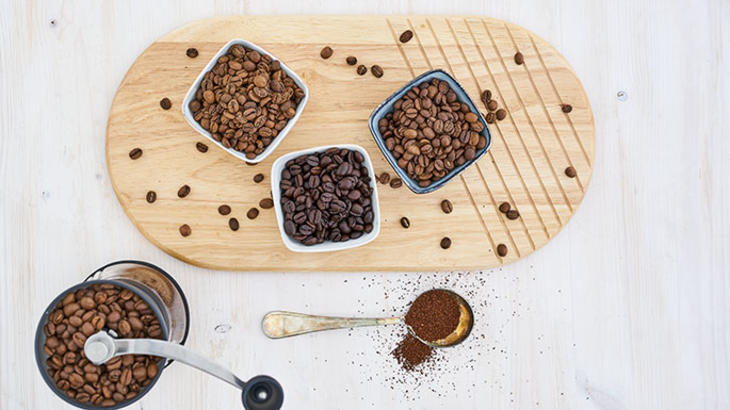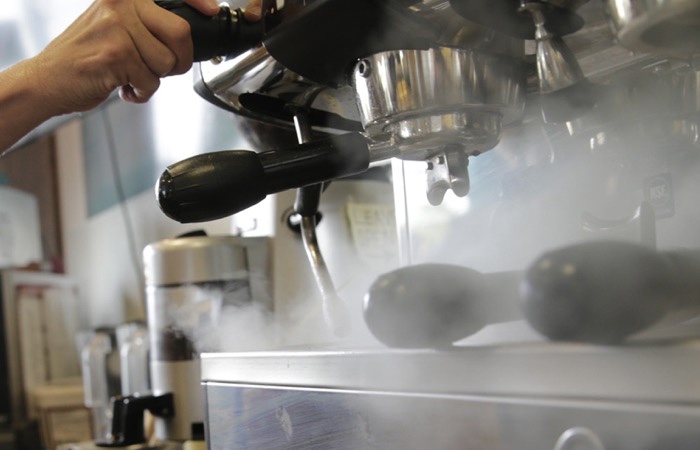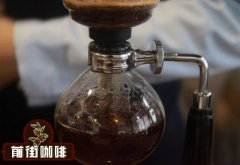Where is the price of a big brand of bean grinder? Introduction of factors affecting Coffee extraction by Bean Grinder
Professional coffee knowledge exchange more coffee bean information please follow the coffee workshop (Wechat official account cafe_style)
Among the factors that determine the taste of coffee, "beans", "grinding" and "machine" are hardware factors, and "technology" is software factors. today, the editor briefly introduces the impact of grinding on the taste of coffee.

At present, there are many kinds of bean grinders on the market, but they can be divided into flat knife grinding, cone knife grinding, roller grinding, ghost tooth grinding, machete grinding and so on. Among them, the roller mill is mostly used in large factories to crush beans like a noodle machine, which has high grinding efficiency, but is not suitable for cafes, while machete grinding is mostly a household simple bean grinder, which uses a blade to tell the power of rotation to chop up beans with extremely low uniformity and high calorific value, which is not conducive to the extraction of coffee flavor. Flat knife grinding and cone knife grinding are the mainstream grinding plates at present, and the differences are as follows:
On the whole, the flat knife grinding disc has the advantages of fast rotational speed, fast grinding and more uniform, while the disadvantage is easy to heat and relatively short life, while the conical knife grinding disc has the advantages of not easy to heat and long life, and the disadvantage is slow and uneven.
Small Fuji's ghost tooth grinding plate can grind more uniform coffee powder, at the same time produce less fine powder and higher grinding efficiency. But it is not suitable for the extraction of espresso (not fine enough).
There are four main factors affecting extraction by bean grinder:
Evenness: coarser coffee particles are more likely to be underextracted, while finer particles are overextracted in advance, so the coffee powder with a larger span of grinding thickness can taste more turbid and irritating smells. When the coffee powder with the same size and similar shape is used for extraction, the taste becomes brighter and stronger, and the performance of flavor characteristics is clearer and consistent.
The amount of fine powder: coffee powder close to flour can easily be overextracted or even dissolved in water, thus affecting the extraction taste of coffee. The more fine powder, the more easily coffee is over-extracted, and the more bitter the taste is, the more mixed it is. When making espresso, the fine powder will first be washed out by the water and into the cup. If extracted properly, the thick oil will hold up the fine powder, and the fine powder will float on the surface of the oil, forming a beautiful "tiger spot". But "tiger spot" does not represent the taste of espresso. The production of fine powder can be reduced by choosing a better bean grinder or using a sieve. However, if there is too little fine powder, the coffee brewed will also lack a sense of hierarchy, and the balance can only be put into practice, not in words.
Calorific value: the grinding plate of any bean grinder will generate heat in the grinding process, and the heating of coffee powder will accelerate the oxidation process and accelerate the volatilization of aroma, resulting in the weakening of coffee flavor after brewing. The calorific value of the cutter head depends on the size of the grinding plate, the material used, the structure of the knife, the fineness of grinding, the speed of the motor, the hardness and texture of coffee beans and many other factors. Therefore, at present, large brands of bean grinders begin to be equipped with heat dissipation windows, cooling fans, choose more heat-dissipating metal, or drive the cutter head with higher torque and low speed motor, so as to reduce heat generation.
Static electricity: generally speaking, the finer the grinding, the faster the grinding machine, the stronger the static electricity generated; the internal material is plastic, and the lower powder mouth does not use the bean grinder designed to reduce static electricity, so the static electricity generated is stronger; the coffee beans with rich oil and deep roasting are ground, the static electricity generated is stronger. When grinding the Italian bean mill, the fine powder often appears as a ball, which affects the density of the powder, resulting in uneven extraction, while the iron absorber at the outlet of the single bean mill absorbs silver skin and fine powder through electrostatic adsorption. in order to reduce the taste and miscellaneous smell of excessive extraction.
END
Important Notice :
前街咖啡 FrontStreet Coffee has moved to new addredd:
FrontStreet Coffee Address: 315,Donghua East Road,GuangZhou
Tel:020 38364473
- Prev

Daily maintenance guidelines for semi-automatic Italian coffee machine
Professional coffee knowledge exchange more coffee bean information please follow the coffee workshop (Wechat official account cafe_style) 1, daily cleaning and maintenance work: 1. Coffee machine body cleaning: wipe the fuselage with a wet dishcloth before starting up every day. If you need to use detergent, please spray it on the wet dishcloth and then wipe the fuselage with a mild and non-corrosive cleaner.
- Next

Would you like to stir the coffee in the siphon pot? What happens if siphon coffee is made without stirring?
Professional coffee knowledge exchange more coffee bean information Please follow the coffee workshop (Wechat official account cafe_style) usually when making siphon coffee the baristas in front street will speed up the extraction of coffee powder by stirring more and remove the fire in about a minute to allow the coffee liquid to flow back. The editor is a little curious, if the parameters are consistent with the usual parameters, but
Related
- What is the Philharmonic pressure? How to use Philharmonic pressure to make delicious coffee
- Why does a hand grinder have more fine powder than an electric grinder?
- In addition to the hot mom, what is the difference between the versions of EK43 | ditting and Mahdi ek43?
- What kind of equipment do you need to make coffee by hand? Introduction to novice starter cooking equipment tools
- Espresso needs to be ground how thick and thin scale entry Italian Coffee Machine Bean Grinder investigation and Grinding course
- How much does it cost to open a small private cafe? How much does it cost to learn coffee? How to operate it?
- The difference between the flavor characteristics of hand-brewed coffee and coffee maker is hand-brewed coffee really better than coffee maker? Can I use a coffee machine to make coffee beans by hand?
- The difference between 01 and 02 of hario v60 filter cup what is the difference between 01 and 02 filter cup opening and cooking flavor
- What's the difference between the smart cup and the French kettle? Which is better, the French kettle or the Smart Cup?
- What's the difference between a smart cup and a V60 filter cup? The difference between the taste of smart cup and hand-brewed coffee

